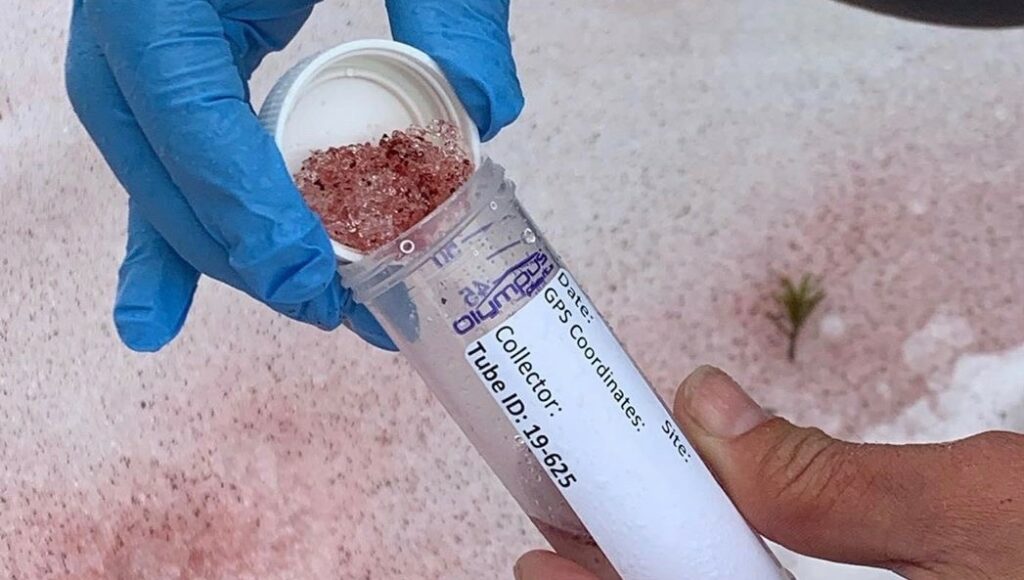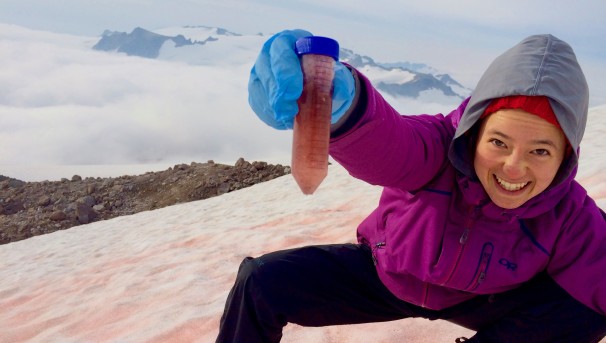Have you ever noticed pink snow during your summer hikes? It does seem cool, right?
Unfortunately, although it may be a remarkable opportunity for nice pictures, it represents a threat for the glacier itself and more widely for the climate of the planet.
The unusual colour of the snow is generated by the abundance of snow algae blooms, whose growth and proliferation are induced by the higher temperatures caused by climate change. These organisms are perfectly natural and integrated into the alpine environment, but their uncontrolled propagation might strongly affect the fragile equilibrium they are living in. Indeed, snow algae blooms boost the glacier and snowpack melt. Scientists from all over the globe are focusing their researches on this phenomenon, trying to understand more the reasons of their growth and how to curb the melting process, but its huge distribution overcomplicate the studies.

Living Snow Project offers a concrete and brilliant solution to the need of samplings: hikers, skiers, and mountain enthusiasts are invited to take part in the research, supporting it on various levels and eventually becoming scientists themselves . Downloading the dedicated app (Apple and Android), everyone can detect and report areas where the pink snow phenomenon is spreading and ask for the materials to take samples of the affected snow. This opportunity is limited to those who are visiting US and Canadian glaciers, because the collected samples need to be sent to the labs of the Western Washington University, that will take care of the research.
The project is entirely run by students and volunteers, and the costs of the studies are covered thanks to a crowdfunding Here the link to support their work: https://www.vikingfunder.com/project/3177
The Living Snow Project is run by Western Washington University in collaboration with the Desert Research Institute for the Living Snow Sierra. It is partly supported by Western Washington University, The Whatcom Foundation, NASA Nevada EPSCoR, the Mazamas, the American Alpine Club, the National Science Foundation.
Don’t miss the chance to do your part!
Images: Living Snow Project

